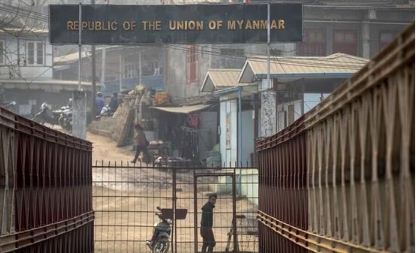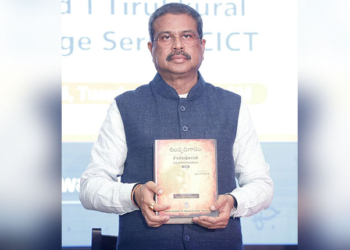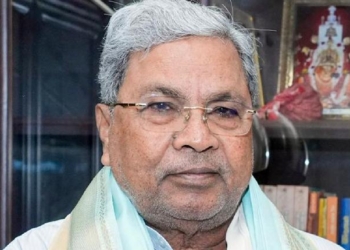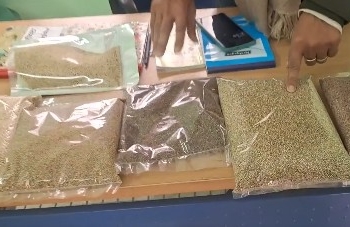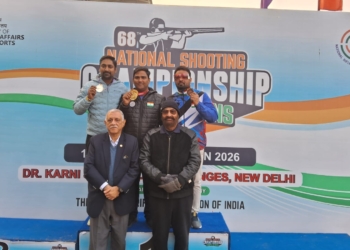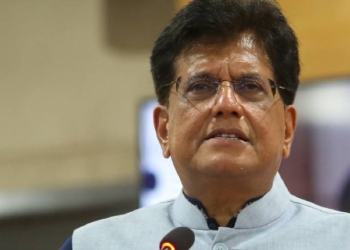Itanagar/Imphal: Arunachal Pradesh Chief Minister Pema Khandu and several Manipur based organisations including influential Coordinating Committee on Manipur Integrity (COCOMI) hailed the decision of the Centre to fence the entire 1,643-km-long India-Myanmar border.
They said that the step will check the movement of inimical elements from across the border.
“A great move in the right direction to make our borders foolproof. Gratitude to Hon’ble Prime Minister Shri Narendra Modi ji and Hon’ble Home Minister Shri Amit Shah ji to fence our borders along Myanmar,” Arunachal Pradesh Chief Minister wrote on X.
He said that state-of-the-art surveillance will check the movement of unscrupulous elements.
Earlier, Manipur Chief Minister N. Biren Singh had also thanked Home Minister Amit Shah for the decision to fence the India-Myanmar border.
“It has been decided to construct a fence along the entire 1,643 km India-Myanmar border. To facilitate better surveillance, a patrol track along the border will also be paved,” Shah wrote on X.
Shah said that the government is committed to building impenetrable borders.
COCOMI Spokesperson Khuraijam Athouba said that fencing along the India-Myanmar border is necessary.
“The ongoing violent crisis in Manipur can be traced back to the root cause of population explosion resulting from significant illegal immigration since the 1950s, particularly during every political crisis, from Myanmar,” he said.
“This influx is now being exploited as a means to occupy territories in Manipur, fueled by the generation of new imaginary ideas like Zalengam. It is crucial to acknowledge and understand this historical pattern to navigate the complexities of the present situation.”
The COCOMI leader told IANS: “We sincerely hope the Central government will follow steps which would equally be guided by truth. We seek no favors, only decisions rooted in unwavering truth.”
Few other Meitei groups also alleged that various drugs are being smuggled into India from Myanmar taking advantage of the unfenced international border.
Officials said that the main objective of fencing is to stop misusing the border for illegal activities as some inimical outfits including militant groups are misusing the Free Movement Regime (FMR) between India and Myanmar.
“Fencing along the Myanmar border and scrapping of FMR would stop the inflow of illegal immigrants from across the border and curb the drug, arms and ammunition and gold smuggling,” an MHA official said.
Mizoram Chief Minister Lalduhoma and many leading and influential organisations, including National Socialist Council of Nagalim-Isak-Muivah faction (NSCN-IM), Young Mizo Association, the Eastern Naga People’s Organisation (ENPO) have however opposed both the fencing and the scrapping of FMR.
The FMR allowed citizens residing close to both sides of the border to move 16 km into each other’s territory without passport or visa.
Mizoram Chief Minister Lalduhoma had said in Aizawl that his government does not have the authority to stop the Centre from erecting border fencing along the India-Myanmar border and scrapping the FMR between the two countries, but it would oppose both the moves.
Lalduhoma had said that the border with Myanmar in Mizoram was “unilaterally imposed” by the British without consulting the people and the Mizo-Zo-Chin community people living on both sides of the border do not accept the boundary.
Nagaland Chief Minister Neiphiu Rio had said the decision of the Centre to fence the India-Myanmar border needs thorough discussion before implementation.
Rio had said that fencing along the India-Myanmar border is urgently required: “We have to work out a formula on how to solve the issue for the people and prevent infiltration as well, because Nagaland is bordered by Myanmar, and on both sides there are Nagas.”
(IANS)




